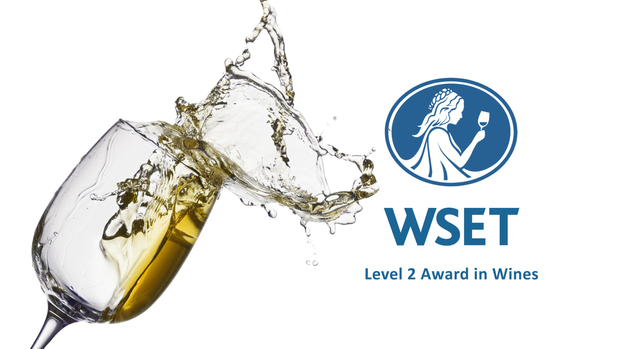You have been seduced here, to this article, because you are on the hunt for advice on the best way to study for the WSET* Level 2 wine exam, the second tier of the Wine & Spirit Education Trust’s prestigious assessment program.
It’s a BIG exam that covers a huge amount of material but it’s worth the investment of study time it requires. Because with that sexy WSET ® Level 2 pin speared through your lapel, many career opportunities will open up for you, whether your goal is to become a wine marketer, consultant, critic, sommelier, journalist, or even, someday, a wine-maker.
So, what is the ultimate answer to the ultimate question: what’s the best way to study for the WSET Level 2 exam?
The answer is ... 42 (according to The Hitchhiker’s Guide to the Galaxy).
For real though, the best way to study for the WSET Level 2 is the most efficient way. Forget cramming for eight hours a day; forget wine podcasts and YouTube videos; forget reading 127 books on wine; and forget that wine-tasting trip to Napa Valley you planned with your mates... although be ready to book it to celebrate passing the exam!
Here's how to pass the WSET Level 2 exam: study efficiently, from day one. That’s it. And the tools you need for the job are:
- The latest WSET 2 textbook, and
- Brainscape’s expert-curated WSET Level 2 flashcards.
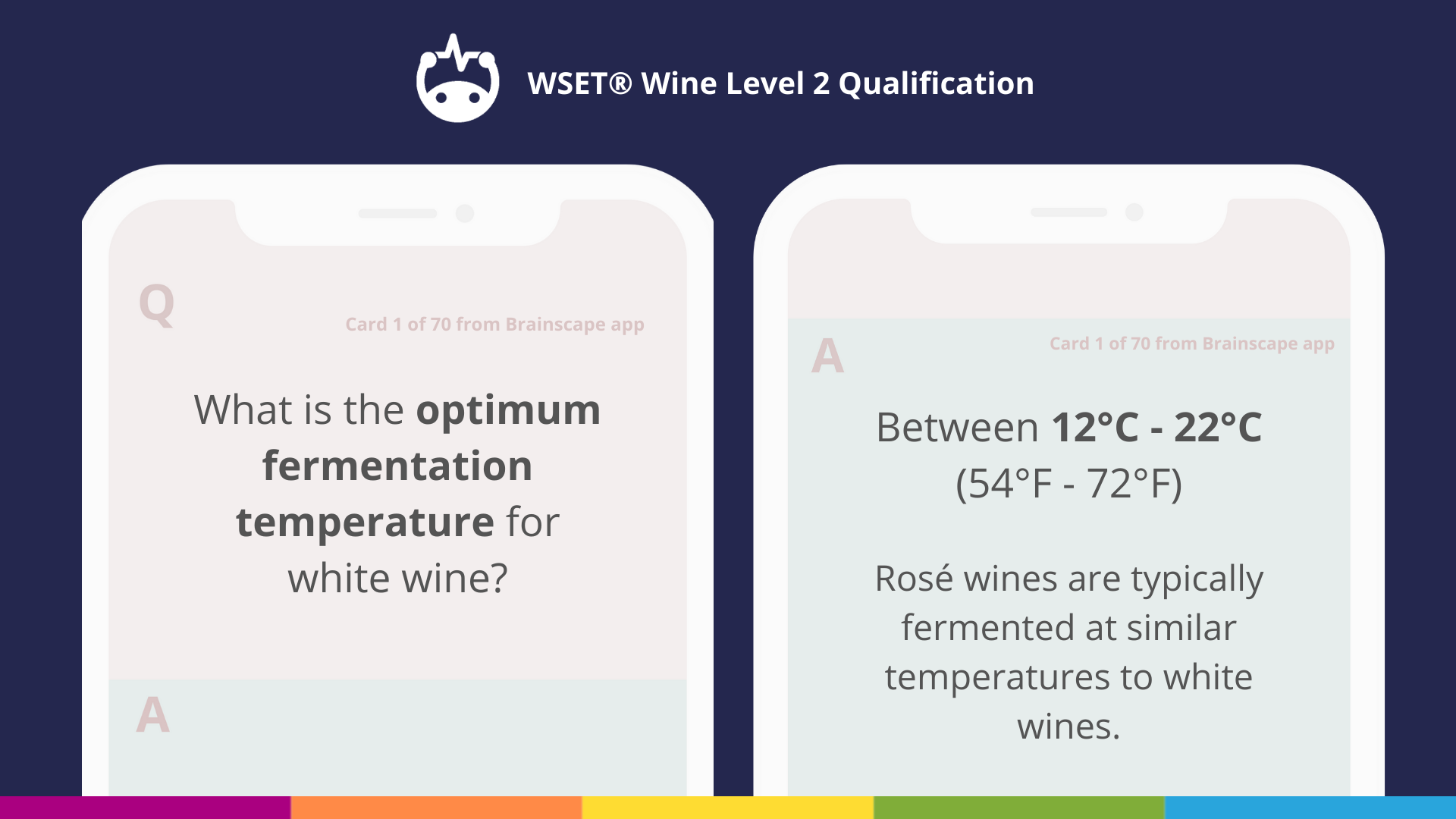
What we’ll be exploring in this guide are 10 seriously crucial and NON-OBVIOUS tips on how to study for the WSET Level 2 exam more efficiently.
Remember that this is a knowledge-intensive, fact-dense exam. By studying efficiently, you’ll be able to internalize all the facts and information you need in order to smash this examination into the stratosphere. So, without further ado, let’s introduce you to the tools you need to get the job done...
[By the way, if you’re also interested in the specific exam topics that are covered in the exam, check out Brainscape’s guide on what to expect on the WSET Level 2.]
Your tools of the trade: the WSET textbook and Brainscape flashcards
Once you’ve signed up for the course, you will receive your beautiful and shiny new WSET Level 2 textbook. Consider this to be The Oracle (*echoes* oracle, oracle, oracle ... )
All of the questions you’ll come across in the exam will be taken from the pages of this book. This is why we advised you to “forget about” reference books, podcasts, videos, and boozy adventures in the 'winelands'. Not because they aren’t helpful, but because they aren’t, strictly speaking, necessary to pass the exam.
Stick to the textbook. Everything you need to know is in there.
Your other essential study tool is Brainscape’s WSET Level 2 flashcards.
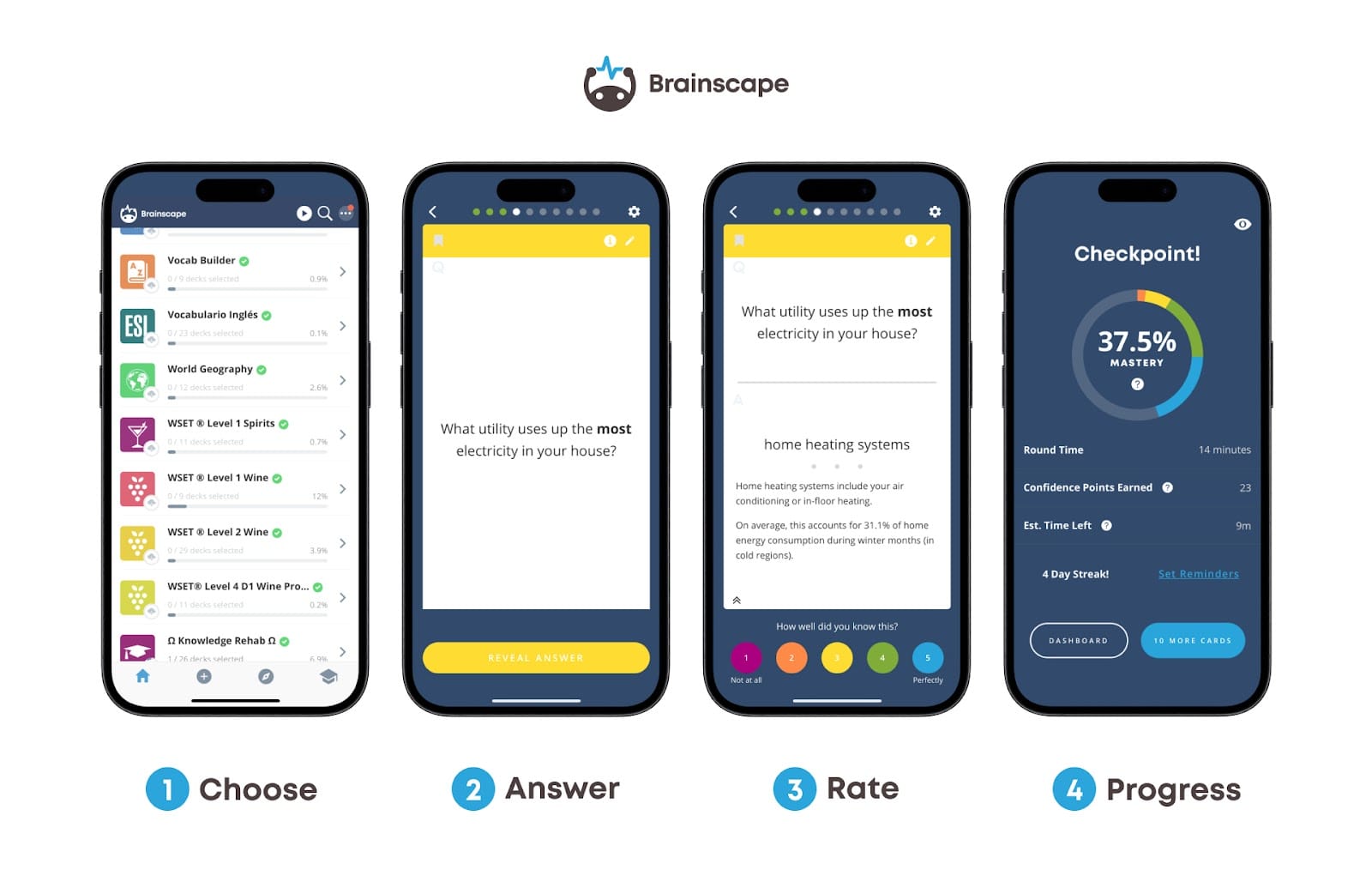
Through a collaboration with an army of certified wine experts and educators, Brainscape has condensed the latest official WSET Level 2 curriculum into a collection of question-and-answer flashcard pairs. These flashcards are digital, of course, and exceptionally pretty to look at and fun to study.
But the real “secret sauce” behind the success of Brainscape’s learning platform is the fact that it leverages three fundamental cognitive principles to help your brain (1) learn more efficiently, and (2) remember what it learns. These principles are:
- Active recall, which prompts you to mentally retrieve the answer to a question from scratch, without selecting from a multiple-choice list;
- Metacognition, which is self-assessing how well you know the answer to a question (thinking about your thinking, in other words); and
- Spaced repetition, which is seeing the same flashcard at optimal time intervals for learning, while repeating the flashcards you do know well less frequently.
Your brain is hard-wired to learn this way so by intelligently leveraging these three cognitive principles, Brainscape really does help you to establish deeper, more significant memories of the information in as much as HALF the time it would ordinarily take you!
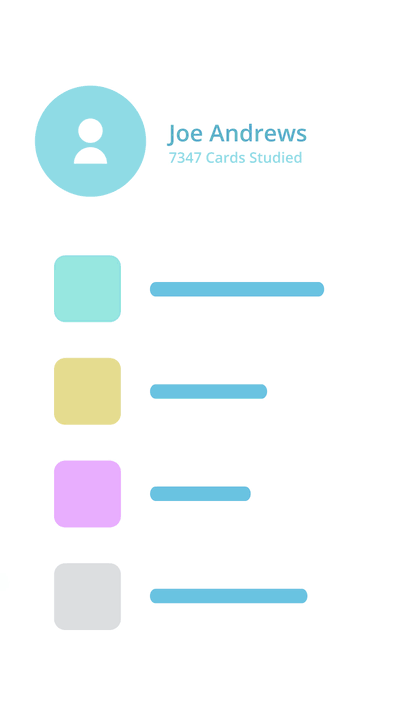
Now that you’ve got your study tools holstered and ready for action, let’s explore the best ways to study for the WSET Level 2 exam …
What you’ll learn in this WSET Level 2 study guide:
- Tip 1: Start studying on day one
- Tip 2: Turn your study approach on its head
- Tip 3: Stick to the textbook (most recent edition)
- Tip 4: Master the facts with Brainscape’s WSET 2 flashcards
- Tip 5: Really understand the facts
- Tip 6: Use maps to study the regions
- Tip 7: Pay attention to regional differences
- Tip 8: Learn the WSET 2 exam’s ‘command words’
- Tip 9: Complement your learning with some group study
- Tip 10: Your fear of looking stupid is holding you back!
The best way to study for the WSET Level 2 exam
Tip 1: Start studying on day one
This is probably the most important of our WSET study tips.
Think of the WSET Level 2 exam like a vast buffet of delicious food. There’s no way you could consume everything in one sitting or even over the course of several days. But if you patiently graze through that buffet plate-by-plate over the duration of several weeks, months even, you’ll (1) eventually get through every last morsel of food, (2) be more likely to remember each meal individually, and (3) enjoy the experience.
So, our advice is to study from day one, devoting time each and every day to learning, memorizing, and internalizing the information the WSET Level 2 throws at you, even if it's just a TINY bit on some days. That's how to pass the WSET level 2: by steadily building your knowledge throughout the course, and arriving at its conclusion fully prepared!
Tip 2: Turn your study approach on its head

The typical student goes to class, takes notes, and then buries those notes in the dusty recesses of their bag, only to dig them up a week or two before a test or exam. We want you to take that model of learning and slam dunk it into the bin harder than Vince Carter after his third Red Bull.
The best way to study for the WSET Level 2 is to learn the material before you get to class.
If that sounds ridiculous, it’s only because you’ve been doing it wrong your whole life. Studying, that is. To make the material truly stick, you should actually be studying before every class, not just at the end of the term or semester, when you’ve forgotten everything and practically have to relearn the course from scratch.
(Yes, procrastinating then cramming may be what 95% of people actually do, but it makes no sense!)
Here’s how to study for your WSET 2 classes:
- Consult your WSET 2 course outline to see what subjects you’ll be covering in the next lesson, let’s say it’s wine and food pairing.
- Then, before you even step foot in class, perhaps the night before, read through the textbook section on wine and food pairing.
- Make a note of the chapter’s most salient points and jot down any questions you have or facts/passages you’re unclear on.
- Then, run through Brainscape’s corresponding flashcard deck on ‘Wine & Food Pairing’ to make sure you memorize and internalize the chapter’s most important facts.
If you follow these steps, you’ll walk into class already well-versed in the material and you'll have identified any areas of confusion. The class will serve to mentally consolidate what you’ve already learned, thereby making it "stick" more permanently so you can spend your ongoing daily review time focusing only on your remaining weaknesses.
Tip 3: Stick to the textbook (most recent edition)
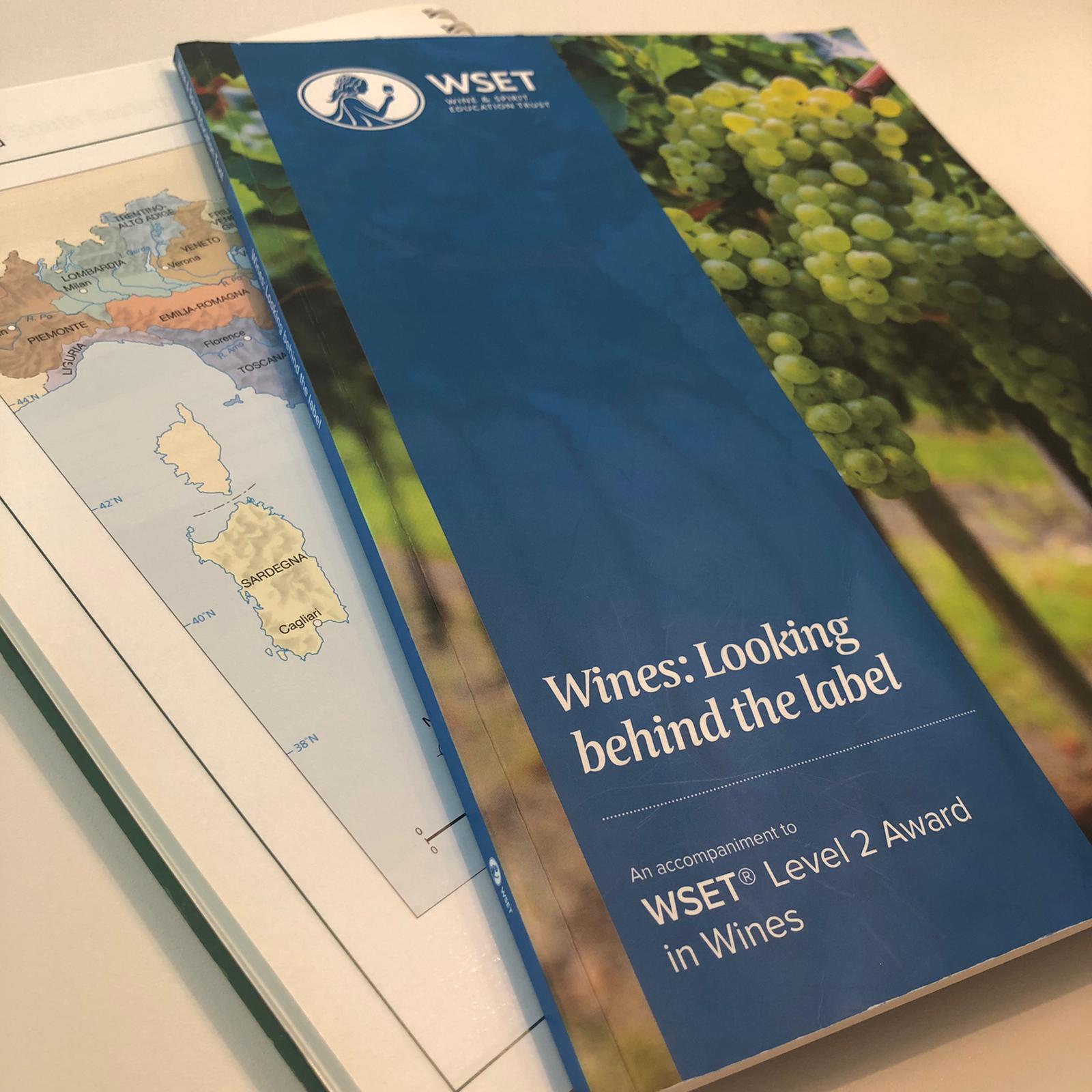
To study efficiently for the WSET 2 exam, you need not spend a second of time consulting or studying other resources, like videos, reference books, magazines, or podcasts. All you need is the most recent edition of the WSET Level 2 textbook.
Yes, we’ve already mentioned this but there’s a little more to this gem of advice than meets the eye. The reason we encourage you to rely heavily on the textbook for the information you need to know is not only to keep your learning efficient. It’s also because the information in the official textbook doesn't always conform exactly to every other high-quality external source.
Even though an external source may also be correct, your answers need to be 100% constructed from what you’ve learned in the WSET 2 textbook. The textbook is The Oracle and The Oracle is to be believed and obeyed. Or else thy final grade will suffer!
Tip 4: Master the facts with Brainscape’s WSET 2 flashcards
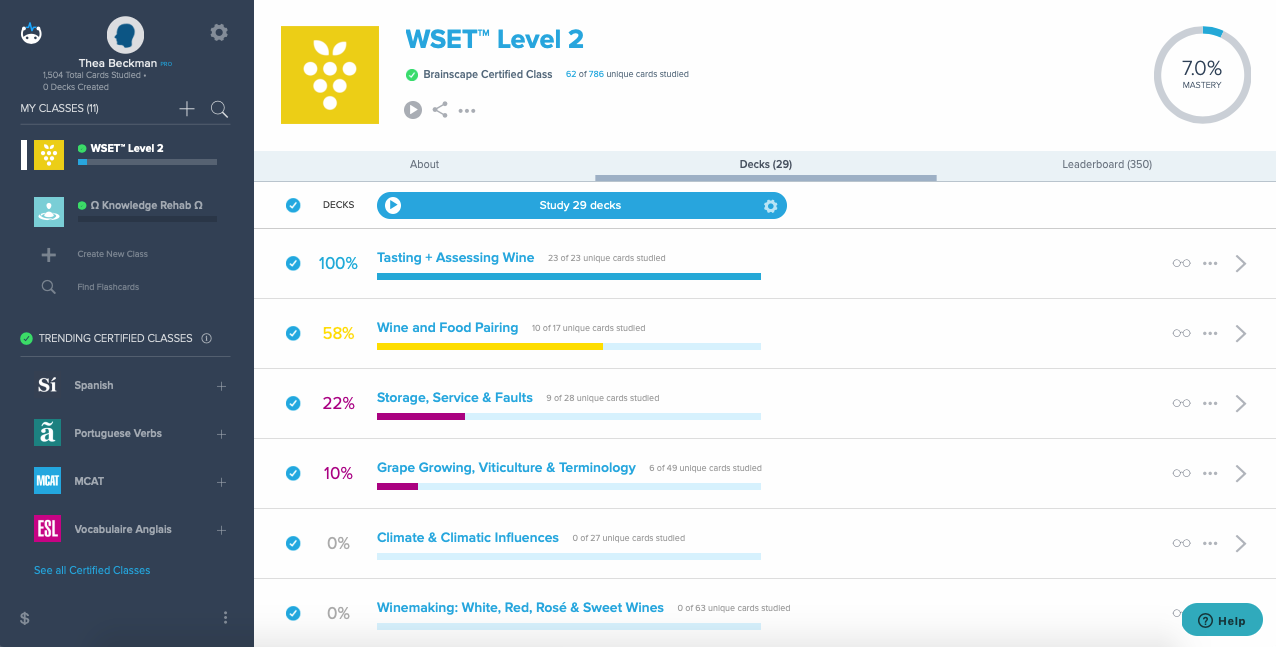
As you progress through your coursework in class, use Brainscape’s WSET Level 2 Flashcard collection to learn and internalize the swarm of facts each chapter requires you to remember.
So, when you learn about viticulture in class, work through Brainscape’s flashcard deck on ‘Grape Growing, Viticulture & Terminology’, which takes you on a fascinating journey of the anatomy of the vine, the different vine species and grape varieties, and how to manage a vineyard and combat diseases.
Similarly, when you tackle champagne and sparkling wines, work through the deck on ‘Sparkling Wines’, or ‘Fortified Wines: Port And Sherry’, or ‘Winemaking: White, Red, Rosé & Sweet Wines’, and so on and so forth.
Using Brainscape’s flashcards leverages the cognitive power of active recall, spaced repetition, and metacognition to help you learn the facts more efficiently and in a way that you’ll actually remember for far longer.
Tip 5: Really understand the facts
It’s not enough to just know the facts. You’ve got to understand them too and be able to string them together to form cogent arguments, descriptions, and explanations.
For example, here are some facts you’ll encounter on your journey through the WSET Level 2:
- In Australia, the undisputed classic sites for Riesling are the Clare Valley and Eden Valley.
- The Clare Valley has a warm climate, while the Eden Valley has a cool to moderate climate.
- Grapes tend to achieve greater ripeness in warm climates and, therefore, develop more sugar. In cool climates, they ripen slower, developing less sugar.
- In fermentation, sugar is metabolized by yeast to form alcohol and carbon dioxide as by-products.
- Alcohol is one of the components that gives a wine fullness of body.
These are the facts ... but the question asked by the WSET Level 2 exam might look like this: “Why do Clare Valley rieslings tend to have more body than Eden Valley rieslings?”
What you’re being tested on is your ability to use the facts and apply them to demonstrate your holistic understanding of what influences the body of a wine.
The answer? The cooler Eden Valley climate produces grapes that ripen slower, are lower in sugar, and higher in acid, resulting in rieslings that are fresher and lighter in style than those produced in the Clare Valley. Here, the warmer climate produces grapes that ripen quicker, developing higher sugar levels, which translates to higher alcohol content and, therefore, more body.
Taa-daa! Look how clever you are!
You’ve got to use your noodle to connect the dots on all the facts you learn, so you can demonstrate your logical comprehension of the material in the WSET 2 exam
Pro Tip: In Brainscape, the flashcards consist of question-and-answer pairs (a question on the front and an answer on the back). But many of the cards also contain a little “fun fact” beneath the primary answer and it’s these more descriptive explanations that serve to weave the singular fact into the greater tapestry of the subject.
You’ll see this in the image below, which shows the question side of the flashcard (left) and the answer (right) along with a corresponding “fun fact”.
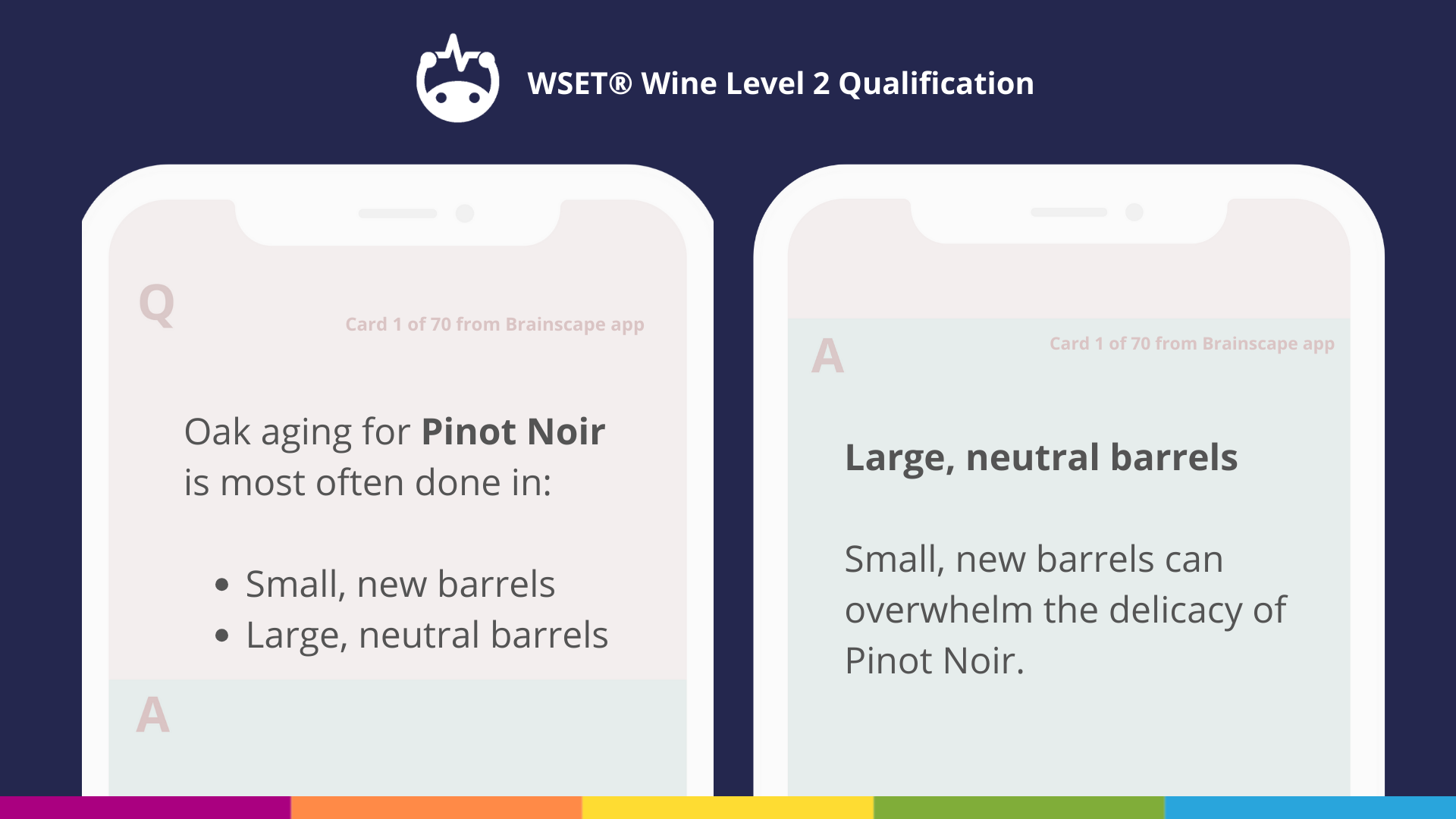
Tip 6: Use maps to study the regions
Context is everything. When talking about France or Germany or Australia or South Africa or any wine region, you should be able to mentally picture a map of that region and the various mountains, rivers, lakes, and coastlines that shape its landscapes.
Why?
Because these factors, together with climate, play an integral role in the types of grape varieties grown, the wines, and the styles of wines produced in a region. And understanding how all of these components are inexorably linked will put you in the perfect position to crush the WSET Level 2 exam.
Pro Tip: search for your chosen winemaking region in Google Maps and activate the “terrain” filter (top left-hand drop-down menu). Then, zoom in and explore the region’s topography, identifying how its features influence viticulture (see example below).
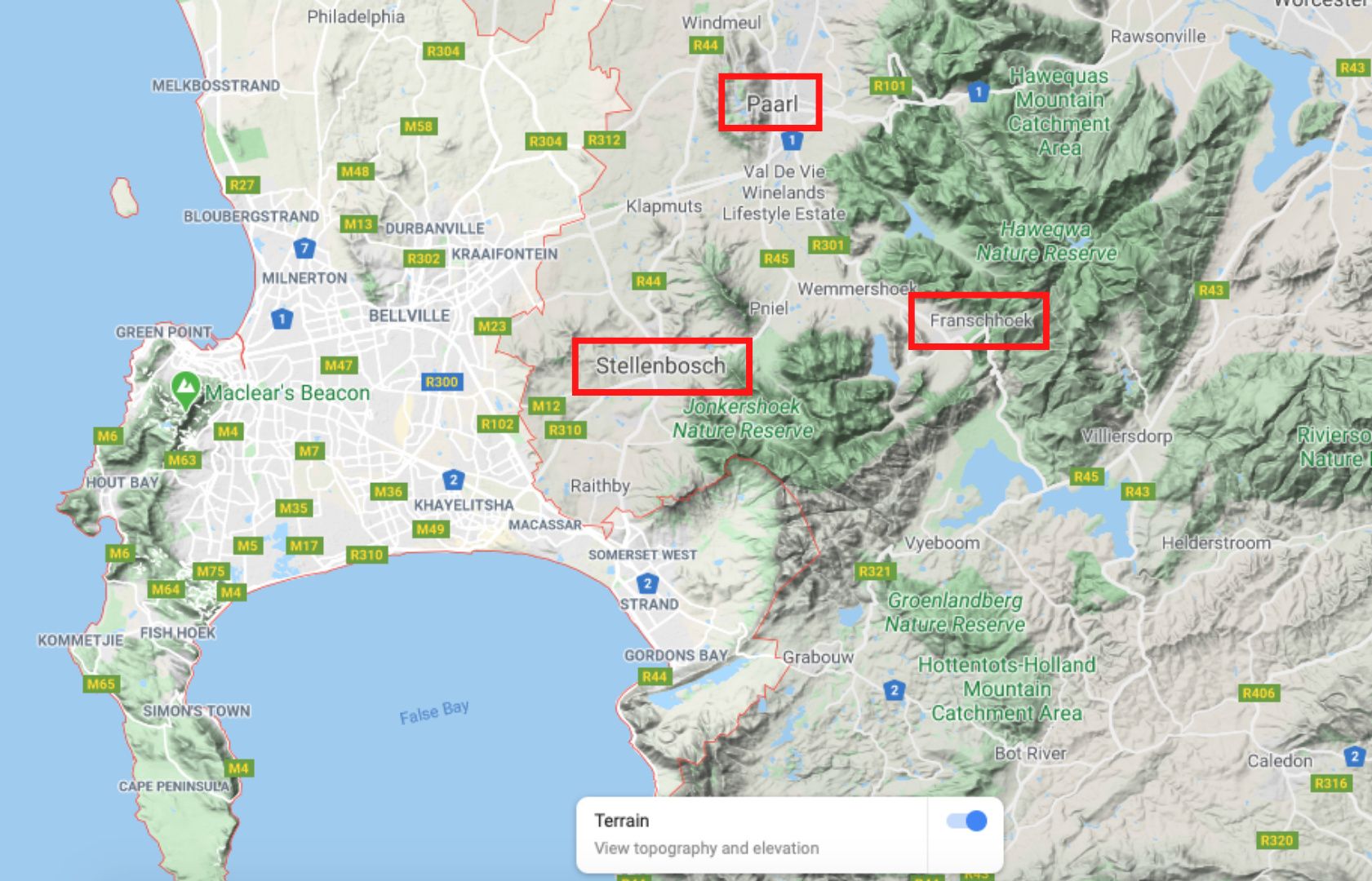
Tip 7: Pay attention to regional differences
The WSET Level 2 exam loves to test your understanding of the various winemaking regions by asking you to perform regional comparisons between grape varieties, climate, winemaking techniques, etc.
In other words, it’s not enough for you to be able to rattle off a constellation of stand-alone facts about Cabernet Sauvignon, for example. You’ve also got to be able to articulate the differences between Cabernet Sauvignon grown in Napa Valley and Bordeaux, France.
Pro Tip: Each one of Brainscape’s 19 flashcard decks on the most important grape varieties—from the ‘Aromatic White Wines’ to ‘Zinfandel’—delves into the regions for which these varieties are known, as well as their climate characteristics and more. So, make sure you study them as you progress through your WSET Level 2 coursework!
Tip 8: Learn the WSET 2 exam’s ‘command words’
Describe, discuss, explain, compare, analyze, etc. ...
The WSET 2 examiners want you to demonstrate that you can identify these ‘command words’ in the questions so that your answers meet the explicit requirements of the question. These command words are laid out in the WSET 2 textbook but just because they sound pretty self-explanatory doesn’t mean you should blithely skip over them, even if English is your first language.
Know what the command words mean so that you know what you’re being asked to do. You do not want to waste time in the exam writing a detailed essay on two winemaking regions, only to get scored badly because you described rather than compared them.
Tip 9: Complement your learning with some group study

"A bottle of wine begs to be shared; I have never met a miserly wine lover." - Clifton Fadiman, American author, editor, radio and TV personality
If there’s one thing better than enjoying a bottle of wine, it’s sharing it with people who are as equally passionate about wine as you. And the same can be said of wine education. Studying in groups can be a really helpful adjunctive way to prepare for the WSET Level 2 exam.
Your “study buddies” can help you with any areas you might be struggling with. And when it’s your turn to help them, you’ll benefit too because teaching is powerful for consolidating information in your brain. It’s also so much more fun than memorizing facts on your own!
HOWEVER ... group study is not always the most efficient way to prepare for the WSET Level 2. In fact, it can even go so far as wasting your precious time.
The WSET 2 exam unavoidably requires hours and hours of fact learning and memorizing, and this is NOT something you can do in a group with other people. Read our article on ‘When to study in groups, and how to do it’.
How can you use group study to your benefit?
The best way to study for the WSET Level 2 is to assign everyone a particular section—preferably the one they struggle with the most—and then have them teach it to the group. This way, they’re forced to really dial in to the material and address their knowledge gaps, thereby (hopefully) ironing out the wrinkles.
Remember, group study is primarily good for two things:
- Getting help on the areas you struggle with, and
- Consolidating what you’ve learned in class and through home study.
If your intentions fall outside of these goals, you might find yourself wasting your time.
Pro Tip: While there is no tasting exam in the WSET 2, coming together and applying your ‘Tasting + Assessing Wine’ theory to an actual wine tasting session can be an excellent way to bring to life the black-and-white text. It’s also good for building your practical experience and exposure to a wider variety of wines, which will especially come in handy if your next goal is to take on the WSET Level 3 exam!
Tip 10: Your fear of looking stupid is holding you back!

The wine industry quite tragically—though probably deservedly—has a reputation for being unapproachable, snobby, and judgmental. While that’s changing now, most students of wine are still petrified of asking questions in class or venturing forth opinions lest it make them look stupid.
Here’s the thing, though: your fear of looking stupid is holding back your progress.
The gold standards are the following:
- The only stupid question is the unasked question.
- When it comes to wine—and the aromas, flavors, and textures we perceive—it’s all opinion, baby! And since there’s no such thing as a right or wrong opinion, you should just let ‘er rip.
So, the next time you detect notes of hot railway yard in that Mosel riesling, cat litter box in that New Zealand sauvignon blanc, or your uncle Frank’s dusty-ass study in that French Bordeaux, put your hand up and say so.
If you’re thinking it, there’s at least one other person thinking it, too.
In summary: how to study for the WSET Level 2 exam more efficiently

The WSET Level 2 takes the wine lover on a thrilling, fact-packed journey through the vineyard, the cellar, and the world’s greatest wine regions. And it examines how each bottle of wine ever made is a living, breathing ode to the terroir from whence its grapes came and to the winemaking skill and imagination (and sometimes, total lack thereof) that went into making it.
This makes you a brave, intrepid explorer and we wish you all the best on your journey through the world of wine. Armed with your latest edition textbooks, Brainscape’s WSET 2 flashcard collection, and the tips we’ve given you in this ultimate guide on how to pass the WSET Level 2, you have everything it takes to pass with distinction!
Don't miss our other WSET Level 2 study guides:
- What topics are on the WSET Level 2 wine exam?
- How to take a WSET Level 2 practice exam
- How to get a career in wine by acing the WSET Level 2 exam
P.S. When you're ready to take your next step to WSET Level 3, we have expert-curated flashcards and study guides to help you crush that challenge!
*Disclaimer: Brainscape has worked with top wine experts to supplement the official publications and preparation offered by WSET.
